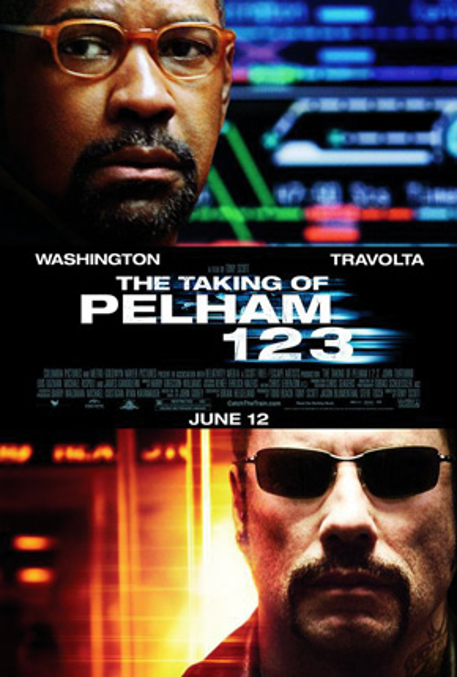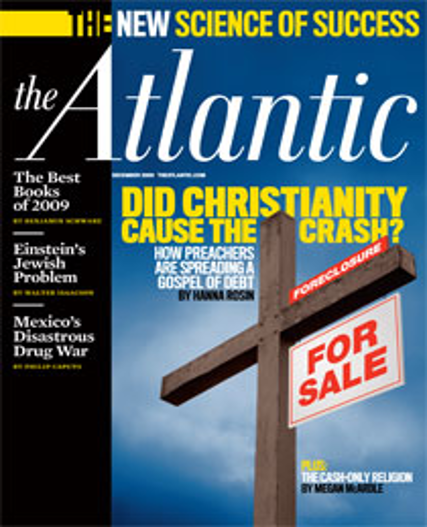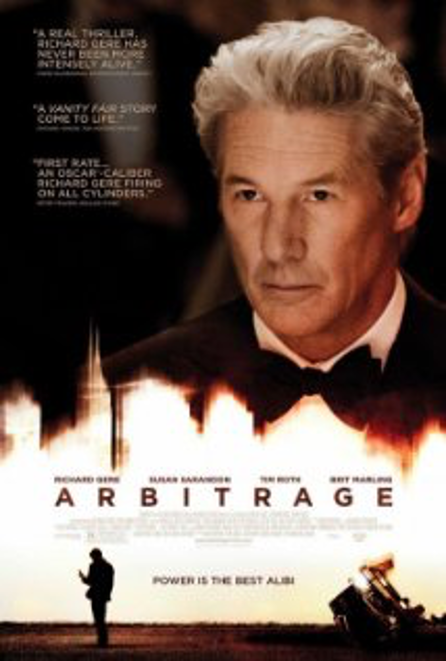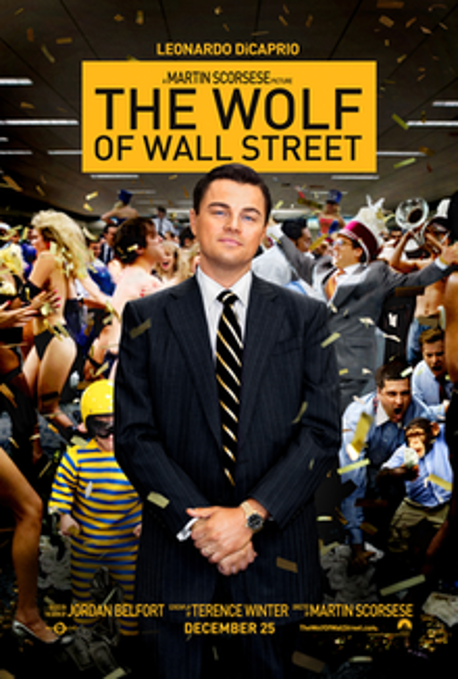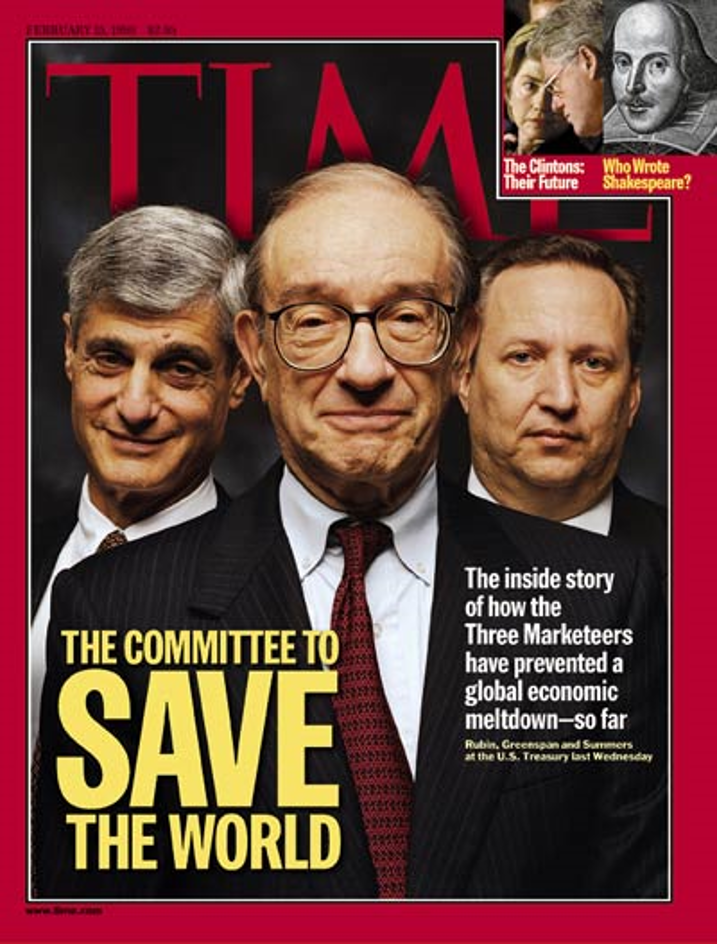August 1996 Cover of Moment Magazine
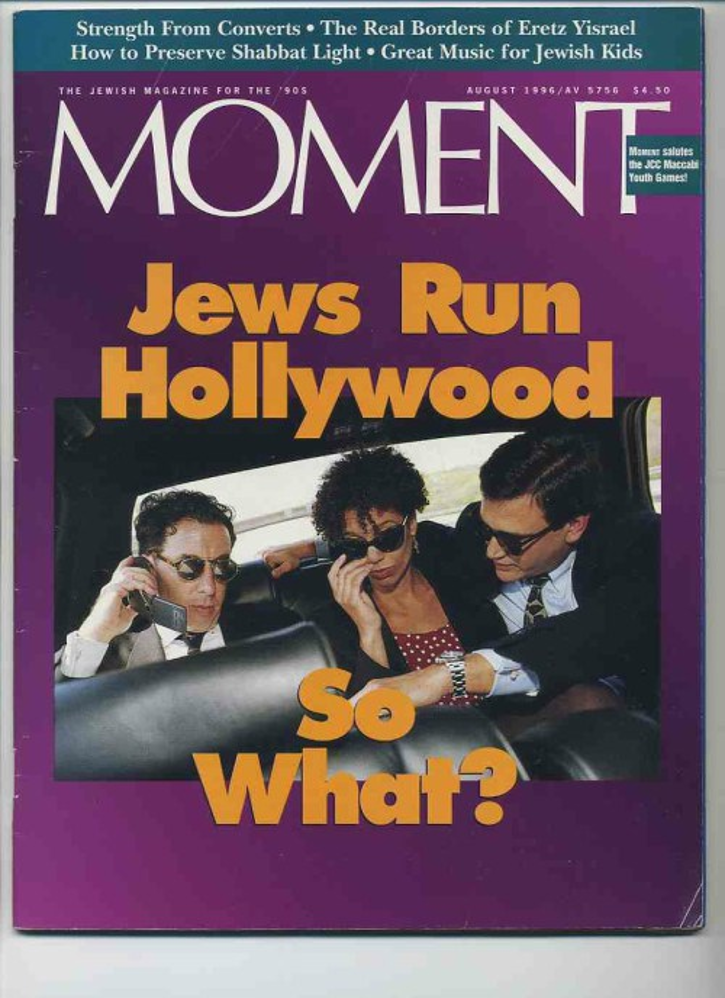
Just before Christmas, TOO contributor Andrew Joyce came out
with a very courageous and informative account of the damage various
Jews have done through their activities at the upper end of the Western
economic system in an area often labeled “vulture capitalism.” I will
build on Joyce’s insights in this essay with a simple goal in mind: To
further expose Jewish practices that enrich them while causing great
harm to a huge number of non-Jews. I will do this by repeating many
things I have written about already on this site, some of which are now
over a dozen years old, which is ancient by Internet standards.
Hopefully, my analysis will enlighten new readers or those just catching
on to the Jewish Question. Most hopefully, my examples will allow TOO
readers to spread this message to the masses of non-Jews thus far
ignorant of the grave threats in our midst. And I will do this through
the painless way of using Hollywood hit films to show how Jews hide
their economic malfeasance right in plain sight.
After all, what can be plainer than Hollywood blockbusters starring
the likes of George Clooney, Julia Roberts, Leonardo DiCaprio, John
Travolta, Brad Pitt, Richard Gere, Susan Sarandon, Tim Roth, Jeremy
Irons, Kevin Spacey, Danny DeVito, Gregory Peck, Ryan Gosling, Christian
Bale and Steve Carell? All of these stars have been pawns brought in to
conceal the facts about massive Jewish involvement in Wall Street
finance — including immense malfeasance and endless instances of shady
practices. Not only does Hollywood conceal these facts, it also projects
them onto innocent Whites. And the tactic appears to work, which is why
we TOO writers can never rest.
Joyce in his article aims to describe the “scavenging and parasitic
nature” of these Jewish practices, labeling them “vulture funds”
practicing “vulture capitalism,” thus explaining the essay’s title and
use of a photo of a vulture:
Vulture Capitalism is Jewish Capitalism (December 18, 2019)
As good as Joyce’s metaphor is, however, there is a competing one:
the vampire sucking the lifeblood out of all it touches. Recall that
course on Marxism you may have taken in the 1970s or 80s, where Marx
wrote in Volume I, Ch. 10 of Capital that “Capital is dead labour, that,
vampire-like, only lives by sucking living labour, and lives the more,
the more labour it sucks.”
That apt quote was updated for modern sensibilities when Rolling Stone reporter Matt Taibbi gave us this priceless quip in “The Great American Bubble Machine,” his essay on the 2008 market meltdown,
The first thing you need to know about Goldman
Sachs is that it’s everywhere. The world’s most powerful investment bank
is a great vampire squid wrapped around the face of humanity,
relentlessly jamming its blood funnel into anything that smells like
money.
Damn, I love that quote.
It’s justified, too, just like Joyce’s use of the term “vulture capitalism.” See how Joyce does not mince words here:
That’s because it’s Jewish enterprise —
exploitative, inorganic, and attached to socio-political goals that have
nothing to do with individual freedom and private property. This might
not be the free enterprise [Tucker] Carlson learned about, but it’s
clearly the free enterprise Jews learn about — as illustrated in their
extraordinary over-representation
in all forms of financial exploitation and white collar crime. The
Talmud, whether actively studied or culturally absorbed, is their code
of ethics and their curriculum in regards to fraud, fraudulent
bankruptcy, embezzlement, usury, and financial exploitation. Vulture
capitalism is Jewish capitalism.
This issue of Jewish economic power mixed with morally questionable
practices in gaining immense wealth has been an enduring theme I’ve
written about for TOO, so I will use the present essay to
resurrect some of my older writing likely long since forgotten. While I
will add to the valuable information Joyce shared with us last December,
as well as the follow-up article by “John Q. Publius” called Hedging their Bets (Who Really Decides Elections),
where he notes that “Jewish hedge fund managers and plutocrats decide
under what guise the neo-liberal machine will continue to operate, for
it is in fact all window dressing,” my primary contribution will be to
show how Jews in Hollywood create a deceitful medley of films that
prevents the mass of goyim from ever connecting Jews to financial
manipulation and theft.
In short, I aim to answer part of the question posed in the purple
cover story posted above following the main title “Jews Run Hollywood.”
The question I will work on is “So What?” The short answer is that in
fact it matters a lot that Jews run Hollywood, from promoting diversity
and holocaust guilt—subjects for another time, to erecting a mask that
hides Jewish involvement in financial crime. Our task is to get behind
the mask.
The Money Films
Wall Street.
Although I haven’t reviewed it previously, I’ll start with Oliver Stone’s 1987 Wall Street,
where (half-Jewish) director Stone was at pains to avoid portraying any
of the leading characters as Jewish, despite the fact that the 1980s
were famous for the rise of Jewish financiers on both sides of legality
— Boesky, Milken, et al. The first book to read on this subject is Connie Bruck’s The Predators’ Ball: The Inside Story of Drexel Burnham and the Rise of the Junk Bond Traders.
The book is a convincing account of Jewish financial mischief — that it
is pervasive and has a massively negative effect on the greater
non-Jewish world.
An even better book is James B. Stewart’s Den of Thieves, in which Stewart chronicles the misdeeds of Ivan Boesky, Martin Siegel, Dennis Levine (who wrote his own book, Inside Out: The Dennis Levine Story),
and most of all, Michael Milken, the mastermind behind it all. Simply
by describing all the Jews involved, Stewart makes it clear that it was a
cabal of Jews that pillaged and destroyed some of the most well-known
corporations in America at the time by inventing and peddling “junk
bonds” as an “advance in capitalism” which enabled hostile takeovers of
corporations while typically saddling them with huge debt and enriching
themselves. A must-have book. (Intriguingly, the obituary of Stewart’s mother notes that her son James’ “spouse” is one Benjamin Weil, who is Jewish.)
Predictably, Den of Thieves was attacked as “anti-Semitic.” Jewish activist Alan Dershowitz called Den of Thieves an “anti-Semitic screed” and attacked a review by Michael M. Thomas in the New York Times Book Review because of his “gratuitous descriptions by religious stereotypes.” Thomas’s review contained the following passage:
James B. Stewart . . . charts the way through a
virtual solar system of peculation, past planets large and small, from a
metaphorical Mercury representing the penny-ante takings of Dennis B.
Levine’s small fry, past the middling ($10 million in inside-trading
profits) Mars of Mr. Levine himself, along the multiple rings of Saturn —
Ivan F. Boesky, his confederate Martin A. Siegel of Kidder, Peabody,
and Mr. Siegel’s confederate Robert Freeman of Goldman, Sachs — and
finally back to great Jupiter: Michael R. Milken, the greedy
billion-dollar junk-bond kingdom in which some of the nation’s greatest
names in industry and finance would find themselves entrapped and
corrupted.
Thomas was attacked as an anti-Semite simply for mentioning so many Jewish names all in one paragraph. His defense was to note that
“If I point out that nine out of 10 people involved in street crimes
are black, that’s an interesting sociological observation. If I point
out that nine out of 10 people involved in securities indictments are
Jewish, that is an anti-Semitic slur. I cannot sort out the difference.”
Other People’s Money.
While not the first film I parsed regarding Jews and money, Other People’s Money, released in 1991, follows most closely the famous 1987 film Wall Street.
The former film stars Gregory Peck in his last major performance,
pitted against Danny DeVito as the peripatetic Wall Street takeover
artist Lawrence Garfield. As I showed in my review,
the movie is fully cleansed of Jewish identity, instead giving us the
diminutive Italian-American DeVito outsmarting the more WASPy figure
played by Peck.
Remarkably, this thirty-year-old film represents the exact same topic
that Andrew Joyce started with in his Vulture Capitalism essay where he
cited a recent Tucker Carlson segment called “Hedge Funds Are Destroying Rural America.” Joyce’s link to this segment describes it:
Tucker Carlson is perhaps the only major media figure in
America willing to attack across party lines to make his point. On
Tuesday night he went after Republican mega-donor Paul Singer in a withering 10-minute special segment on how Singer destroyed a small town in Nebraska in a hostile takeover of the sporting goods retailer Cabela’s.
Now watch the opening of Other People’s Money, with DeVito’s stark “I Love Money” soliloquy. Which ethnic stereotype does that fit? (Hint: think of Shakespeare’s The Merchant of Venice, whose main character’s name starts with “Sh” and rhymes with “High Rock.”)
The genesis of Other People’s Money is important, for it
began as a play of the same name by Bronx-born Jerry Sterner. The
original play’s protagonist, “a Jewish corporate takeover artist, was
named Larry Garfinkle, not Garfield.” And stage actor Kevin Conway
played him as a very Jewish character, to the point that “some critics
and audiences … found Conway’s performance to be larger-than-life —
uncomfortably so. Some reviewers called Conway’s Garfinkle a Wall Street
Jackie Mason — a performance more akin to stand-up comedy than straight
theater, one that emphasized the character’s ethnicity and loaded
Sterner’s play with potentially anti-Semitic ‘Merchant of Venice’
overtones.”
Sterner worried about this, as he related in an interview with the New York Times, saying “I did not want the play to become controversial about what it is not about. It’s not about Garfinkle’s being Jewish,
it’s about his doing good or not.” Because of his discomfort with
Conway’s portrayal of the explicitly Jewish Garfinkle, Sterner added a
“cautionary postscript” to the play’s published text: “The character of
Garfinkle can be played in many ways. The one way he should not be
played is overly, coarsely, ‘ethnic.’”
Even with this controversy, when the play moved to Hollywood, the
script retained the name Larry Garfinkle, but it was crossed out and
changed to “Garfield.” Director Normal Jewison (by most sources, not
Jewish) admitted that he changed it. “It’s not important that Larry
Garfinkle is Jewish. Boone Pickens isn’t Jewish. Jimmy Goldsmith is, as
are nine out of the 12 top corporate raiders in America, but there are
three others that aren’t. What does it matter, anyway? This isn’t about
religion.”
Yeah, what does it matter? (Sigh)
In short, here’s the message: Jorgenson (played by Peck) and his
family are the old America, captured nicely in a touching recreation of
Norman Rockwell’s Thanksgiving Day feast. But the sad reality is that
Jorgenson loses his factory, the workers are thrown out of work, and the
man who loves money has won. Clearly, the impression is that White
America has become a very different place, a place led by those like
Larry Garfield — or Paul Singer, as in Tucker Carlson’s updated account
from small-town Nebraska.
The Taking of Pelham 123.
Jump ahead to the year 2009 and we find a remake of The Taking of Pelham 123,
featuring the “Always-Better-Than-Whites” Denzel Washington up against
John Travolta as a Wall Street mastermind who has first committed
massive fraud, then gone insane.
In this version, Travolta’s character is a New York ethnic Catholic
very prone to guilt. He was also a high-rolling Wall Streeter who
skimmed millions of dollars until he was caught and sent to prison. Upon
his release, he concocts a scheme to make a killing on stocks when he
induces panic in the city with a subway hijacking. Return to James
Stewart’s account of the 1980s savings and loan swindles in Den of Thieves
and you’ll find out that the thieves were ethnic New Yorkers all right,
but they sure weren’t Catholic. Clearly, this deceit is part of a
concerted media effort to blame others for Jewish (mega) misdeeds.
Just to crosspollinate, the Tribe that year called on Israel-born Hanna Rosin to fill out a cover story for the December 2009 Atlantic Monthly.
Coming a year after mind-boggling economic swindles and bailouts that
used up a significant portion of the universe’s zeroes, who gets blamed?
Christians. Now that’s why Jews are so often credited with chutzpah.
Margin Call.
Two years later, we come to the film Margin Call,
starring Kevin Spacey and Jeremy Irons. J.C. Chandor’s 2011 film tells a
story that loosely mirrors the fall of Wall Street giant Lehman
Brothers. Even for Hollywood, however, the deception in this movie is
staggering, and it occurs on many levels. It terrifies me to think that
the masses likely swallowed this tale, particularly the images that have
such a powerful subliminal impact.
Now picture this: The Margin Call premise is that a group of
WASPs and a Catholic or two run a leading investment bank on Wall
Street. Things turn sour, however, and the firm is looking at bankruptcy
unless they can pull off a miracle.
Obviously, such a scenario makes little real-world sense. In the real
world, Wall Street is heavily Jewish, especially the investment banks.
This is so obvious that Wiki has a special segment called Jewish investment banks.
Lehman Brothers was a classic Jewish investment bank. For those
wishing to find more explicit discussion about the Jewish origins and
uninterrupted Jewish roots of Lehman Brothers, see the following
indispensable books:
- Stephen Birmingham: Our Crowd: The Great Jewish Families of New York(Harper and Row, 1967) and The Rest of Us: The Rise of America’s Eastern European Jews (Little, Brown & Company, 1984);
- Jean Baer’s The Self-Chosen: “Our Crowd” is Dead — Long Live Our Crowd(Arbor House, 1982);
- Richard L. Zweigenhaft and G. William Domhoff’s, Jews in the Protestant Establishment(Praeger Publishers, 1982);
- Gerald Krefetz, Jews and Money: The Myths and the Reality(Ticknor and Fields, 1982).
Of particular note, however, is The New Crowd: The Changing of the Jewish Guard on Wall Street
(HarperPerennial, 1989), by Judith Ramsey Ehrlich and Barry J. Rehfeld.
The authors interviewed many of the Jewish participants under
discussion here. They also fill in the background on Lehman partners and
traders, contrasting, for example, “Our Crowd’s” Bobbie Lehman with the
coarse and brash Lewis Glucksman. After reading this book, return to Margin Call to see how you have been lied to.
Margin Call sure was a deception sandwich. The head of the
trading floor, Sam Rogers, is played by Kevin Spacey, who looks, acts
and talks exactly like the middle-class White man he played in American Beauty. In Margin Call there is not even an attempt to give him a Brooklyn accent or exaggerated mannerisms.
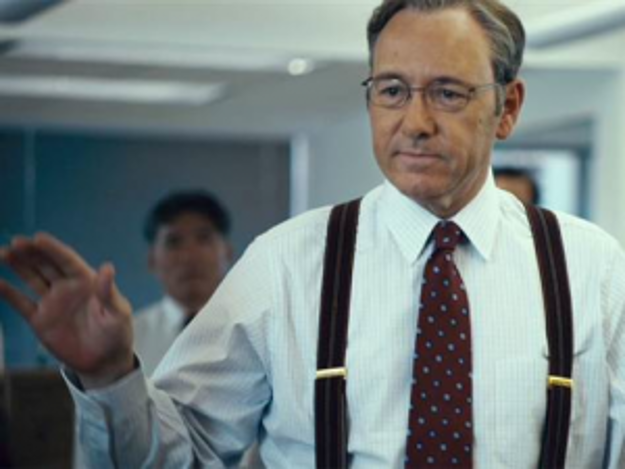 Kevin Spacey in Margin Call
Kevin Spacey in Margin Call
Most egregiously, however, is the fact that the part of Lehman Bros.
CEO is played by none other than the arch-British actor Jeremy Irons.
 Jeremy Irons as the CEO of Lehman Bros.
Jeremy Irons as the CEO of Lehman Bros.
Arbitrage.
A year later, the lying continued as Richard Gere starred opposite aging beauty Susan Sarandon and Tim Roth in Arbitrage.
Gere plays a Wall Street character quite willing to bend and break all
kinds of rules. As in the other Wall Street films just mentioned, the
mission of Arbitrage is to mask the Jew and project the blame onto gentiles. It really is breathtaking.
The film’s opening solidly sets up the identity of Robert Miller
(Gere) and his clan as thoroughly White and Christian. In an interview,
millionaire Miller attributes his innate pessimism about events to his
parents, who had grown up with the Depression, Pearl Harbor and The
Bomb. His everyman Christian American background is confirmed by a
comment that his father was a welder in the Navy and his mother worked
for the Veteran’s Administration.
Soon after, he returns home to a surprise birthday party, where he is
surrounded by a large extended family. His wife, played by Sarandon, is
clearly European-American, as is his daughter Brooke and each and every
child running about the room. There is not one hint that Miller, his
family, or anything in his home could be anything other than gentile
American.
Soon Miller gets himself in trouble and ends up short of cash, so he
manipulates $412 million to paper things over. Along the way he also
gets his mistress killed and burned to a crisp when he crashes a car
after a few drinks. (Naturally, he flees the scene and tries to pin it
on a young African American; those rich WASPs are really horrible
people.)
The finale of the film lays it on thick: Rich gentiles are thoroughly
corrupt when it comes to money. In the last fifteen minutes, we see how
Miller is able to deviously escape the suspicions about him, even
though his wife has connected the dots and figured out how guilty her
husband is. Crushed by his infidelity and the suffering he has put their
daughter Brooke through, she responds — by coldly blackmailing him.
Either he coughs up a significant sum of money for her favorite charity,
or she divorces him and walks away with perhaps far more.
Next, we cut to a scene with the man who bought Miller’s firm, James
Mayfield (who may as well have been named James Mayflower, given his
mien and surroundings), who is shown riding in his limousine to the
“Benefit Gala in honor of The Miller Oncology Center.” He then exits
the limo and ascends the stairs to the goy gala — the entire affair is
sheer goy hypocrisy. The money for the new center is tainted, and
everyone in attendance pretends that everything is honorable. Miller is
all smiles, his wife smiles, even his disillusioned daughter goes along,
cynically but without conviction feting her father: “A dedicated
businessman, a family man, a philanthropist, and an all-around
humanitarian. A man I am very lucky to call my mentor, my friend, and my
father.” The message: behind America’s most sterling institutions and
leaders lie deceit and insincerity — gentile deceit and insincerity, of
course.
The reality, we know, is different, as TOO writers Joyce et al. have shown, along with others. Former Counter-Currents writer Andrew Hamilton, for instance, showed four years ago what real hedge fund managers were doing and who they were:
More often than not the privileged Jews turn
around and use [their] vast wealth … to advance anti-White, pro-Jewish,
and Left-wing causes, thereby harming America and the world in two ways —
economically through callous and shortsighted market operations, and
politically through their “philanthropy” and lavish political donations.
George Soros has done enormous harm to Whites worldwide in this manner.
. . .
Hamilton specifically notes the shocking wealth concentrated in such
hands, referring to Forbes Magazine’s recent ranking of the richest
hedge fund managers in the United States by estimated personal net
worth: “Twenty-four of the 32 names on the list (75%) are Jewish. Of the
10 wealthiest, 8 (80%) are Jewish.” He further adds that “Despite their
social and economic power and privilege the names of hedge fund
managers are virtually unknown even to educated and informed people,
never mind the general public.” In good part, we can thank Hollywood for
this.
The Wolf of Wall Street.
Thus far, I’ve
been a good sport about reviewing these deceptive Wall Street films, but
2013 saw a blockbuster that left me speechless. Here was a film with
one of Hollywood’s biggest goy actors, directed by one of Hollywood’s
top maker of Mafia films, and based on the autobiography of a convicted
Jewish Wall Street swindler who positively reveled in his Jewish
identity and that of his cohorts. Yet the film completed whitewashed
this.
Here’s the howler: As the bantam Jewish stock fraudster Jordan
Belfort, director Martin Scorsese chose none other than six-foot-tall,
(sometimes) blond-haired Leonardo DiCaprio to bleach the story of
anything Semitic. This has to go down as one of the most egregious
miscastings in Hollywood history.
Why did it happen?
My view is that this is a classic case of Hollywood deceiving the public, and I have plenty of evidence for this.
In the film, at exactly five minutes into the story — just after
DiCaprio’s character has snorted cocaine with a hundred dollar bill and
done a little trick by making us think “this shit” (cocaine) will make
you invincible, when it fact he means the money he is using as a straw —
he launches into a speech as he enters his busy trading floor:
See, money doesn’t just buy you a better life —
better food, better cars, better pussy — it also makes you a better
person. You can give generously to the church, or political party of
your choice. Save the fuckin’ spotted owl with money (italics added).
“To the church.” I like that. In his memoir from which the film
springs, Belfort is refreshingly forthright that he is Jewish — and
that, with one exception, all of his close associates are Jewish — as
are the majority of his traders. Now in the film — which “happened” to
open on Christmas Day 2013 — we are informed that rich people like
DiCaprio’s Belfort can give “to the church,” not synagogue or ADL or a
Jewish think tank. It is this kind of subtle deception that would, in my
view, prevent the vast, vast majority of Gentile viewers from
understanding that these financial criminals are Jewish at all.
Back in 2007, the convicted trader Jordan Belfort released his autobiography that engendered the later film. In this book, The Wolf of Wall Street,
Jewish themes are front and center, beginning with the conflation of
Jews and money. Belfort founded the trading firm of Stratton Oakmont (a
very British-sounding name) and went on to amass a fortune. His
descriptions of his escapades spending that money are hilarious, along
the lines of Hunter S. Thompson in Fear and Loathing in Las Vegas. I honestly loved Belfort’s book.
Lust for the “shiksa goddess” is another main theme, as Belfort is
absolutely smitten with the gentile woman he manages to marry. If one
wants an initiation into Jewish attitudes toward ethnicity, Jewish and
otherwise, this is the book to start with. The real fascination
surrounding Jewish characters comes with Belfort’s descriptions of his
comrades, beginning with his right-hand man, Danny Porush. Danny,
Belfort begins, “was a Jew of the ultrasavage variety.” With “steel-blue
eyes,” Porush did not appear to be “a member of the Tribe,” a situation
Porush himself helped along by dressing and acting like a Gentile.
Like many other Jews, “Danny burned with the secret desire to be
mistaken for a WASP and did everything possible to cloak himself in
complete and utter WASPiness.”
Stratton Oakmont’s head of the finance department, Andy Greene,
however, would never pass as a WASP, beginning with the fact that he had
“the worst toupee this side of the Iron Curtain.” To Belfort, Greene’s
toupee “looked like someone had taken a withered donkey’s tail and
slapped it onto his egg-shaped Jewish skull, poured shellac over it,
stuck a cereal bowl over the shellac, and then placed a twenty-pound
plate of depleted uranium over the cereal bowl and let it sit for a
while.”
When discussing another Greene who worked for him — this time Kenny
“the Blockhead” Greene — Belfort describes Greene’s mother Gladys:
“Starting from the very top of her crown, where a beehive of pineapple
blond hair rose up a good six inches above her broad Jewish skull, and
all the way down to the thick callused balls of her size-twelve feet,
Gladys Greene was big.”
She was also quite willing to break the law, beginning with evasion
of taxes on the cigarettes she and the adolescent Kenny smuggled into
New Jersey. When Kenny turned fifteen and began smoking pot, his mother
immediately became a pot dealer, providing her son “with finance,
encouragement, a safe haven to ply his trade, and, of course protection,
which was her specialty.” And because cocaine “offered too high a
profit margin for ardent capitalists like Gladys and the Blockhead to
resist,” they were soon enough plying that trade on Long Island, too.
One gets the feeling that for Belfort, the descriptor “savage” has a
redeeming quality to it, as he describes many Jews that way, such as
“the most savage young Jews anywhere on Long Island,” those from the
towns of Jericho and Syosset. Then there is the Wall Street legend, J.
Morton Davis, “a savage Jew,” and even Belfort himself, “the most savage
Jew of all.” And don’t forget the “Quaalude-addicted, potbellied savage
Jew with a thousand-watt social smile and a secret life’s mission to be
mistaken for a WASP” who ripped Belfort off when selling him horses.
Belfort’s book unashamedly celebrates Jews.
The film, however, cannot be more different, for reasons stated
above. I positively scoured this film and found next to nothing — and
it’s nearly a three-hour film. Here’s about all I could find: When one
character demands that another come pick up millions in elicit earnings,
the latter is insulted and says “I’m not fuckin’ schvartze.” How many
caught that one?
One more example that will surely crop up concerns Belfort’s father
Max — and the character who plays him, Rob Reiner. In this case, it
again comes down to insider/outsider interpretations. Those who know
that Reiner is himself Jewish and know that the real Belfort is Jewish
will get it. Others, probably not. Back in the early ‘70s, did American
viewers see “All In the Family” character Michael “Meathead” Stivic as
Jewish? Same actor. Same ethnic undermining without the goyim knowing
about it, either.
====================
The Big Short.
Did things get any better in 2015 when the star-studded film The Big Short
came out? Definitely not. Here we had Brad Pitt, Steve Carell,
Christian Bale and Ryan Gosling — goys to a man — acting out the script
of the book of the same name by best-selling author Michael Lewis (Moneyball, The Blind Side).
And that script would be about how the subprime mortgage industry was
slated for a big fall, with our main characters devising ways to place
bets on such a fall. To them, there was a serious housing bubble and
they meant to
collect when the collapse of the bubble came.
This time, however, Hollywood alone cannot be faulted for seriously
downplaying Jewish identity because gentile author Lewis already did
that for them, thank you very much.
I had high hopes for Lewis’s book revolving around Jewish identity
and was encouraged when I read the second sentence of Chapter One:
“[Steve Eisman had] grown up in New York City, gone to yeshiva schools,
graduated from the University of Pennsylvania magna cum laude, and then
with honors from Harvard Law School.” Yes, I thought, this book was
going to openly discuss Jewish identity on Wall Street.
A few pages later, Lewis describes Eisman’s wife and her mother
talking about the United Jewish Appeal, as well as how the young Eisman
studied the Talmud to find its internal inconsistencies, so I thought we
might have a Jewish tale on par with Jordan Belfort’s The Wolf of Wall Street.
Alas, that was the last we heard of anything explicitly related to Jews
or Jewishness. What a pity, since the subprime mortgage bond collapse
was in fact an intensely Jewish affair.
We could have read about Lloyd Blankfein of Goldman Sachs, Maurice
“Hank” Greenberg of AIG, Sandy Weill of Citigroup, Dick Fuld of bankrupt
Lehman Brothers, or Alan Schwartz of the failed Bear Sterns—and many,
many other Jewish players on Wall Street. Most remarkably, we read nary a
word on the real powers in finance, people like those “The Three
Apostles,” Fed Chairman Alan Greenspan, Treasury Secretary Robert Rubin
or his successor Larry Summers. Nor do we read more than passing
reference to two-term Fed Chair Ben Bernanke, who oversaw the entire
life of the subprime mortgage fiasco, serving from 2006 to 2014.
Worse, we never read about the larger narrative surrounding the financial crisis of those years. (This review
of then Treasury Secretary Hank Paulson’s account of the crisis gives a
suitable feel for how tremendously dangerous the period was.)
In The Big Short, Lewis follows previously mentioned Steve
Eisman, as well as a gentile California neurologist-turned hedge fund
manager, Michael Burry. Also featured in the book is Greg Lippmann,
head subprime manager at Deutsche Bank, but Lewis never once refers to
Lippmann as Jewish. This just isn’t the story Lewis wants to tell, so
it’s no surprise that Hollywood screenwriters also left out this
important Jewish angle.
Turning now to the 2015 film version of The Big Short, we see that director and co-screenwriter Adam McKay, who is married to the Jewish Shira Piven,
does, to his credit, faithfully show the scene where the young Eisman
is in a synagogue with his rabbi. But my feeling is that this is done so
much in passing that it will be lost on most gentile viewers. More to
the point, however, is that actor Steve Carell simply doesn’t come
across in any way as Jewish.
 Steve Carell should have been Jewish
Steve Carell should have been Jewish
Now that we’ve looked at visual issues and identity in The Big Short, let’s
consider some of the big dollar figures at stake. “Million” hardly has
meaning in the debacle, with “billion” being a far more common term (and
“trillion” popping up now and again). Despite the impression readers
and viewers might have, the four main characters featured in book and
movie were hardly the biggest players in the subprime mortgage game,
though neurologist Michael Burry certainly did well, as this excerpt from a Vanity Fair article Lewis did in March 2010 shows:
It was precisely the moment he had told his
investors, back in the summer of 2005, that they only needed to wait
for. Crappy mortgages worth nearly $400 billion were resetting from
their teaser rates to new, higher rates. By the end of July his marks
were moving rapidly in his favor — and he was reading about the genius
of people like John Paulson, who had come to the trade a year after he
had. The Bloomberg News service ran an article about the few people who
appeared to have seen the catastrophe coming. Only one worked as a bond
trader inside a big Wall Street firm: a formerly obscure
asset-backed-bond trader at Deutsche Bank named Greg Lippmann. The
investor most conspicuously absent from the Bloomberg News article — one
who had made $100 million for himself and $725 million for his
investors — sat alone in his office, in Cupertino, California. By June
30, 2008, any investor who had stuck with Scion Capital from its
beginning, on November 1, 2000, had a gain, after fees and expenses, of
489.34 percent. (The gross gain of the fund had been 726 percent.) Over
the same period the S&P 500 returned just a bit more than 2 percent.
A far bigger winner was John Paulson, who appears briefly in the
article, having spoken to Lewis for the book. Personally, what I’d like
to have read about is Paulson’s bets on subprime mortgages. While Burry
made just shy of a billion dollars, Paulson
made history by earning $4 billion for himself in 2007, followed by $5
billion three years later. “Paulson, bucking the trends and the advice
of other investors, gambled that the mortgage market would collapse. His bet paid off immensely.
In 2007, the funds run by Paulson were up $15 billion — a staggering
investment return rate of nearly 600%.” Of course, for career reasons, I
can see why Lewis didn’t dwell on Paulson in the book, and naturally
Hollywood was happy to let it go unmentioned.
Paulson’s mother was Jewish, and Paulson has worked in a highly
Jewish milieu during his education and career, beginning with a Sidney
Weinberg/Goldman Sachs scholarship. Later, he worked with Leon Levy at
Odyssey Partners, then moved to Bear Stearns. His older sister, Theodora
Bar-El, is an Israeli biologist. Perhaps I should read Gregory
Zuckerman’s 2009 book The Greatest Trade Ever: The Behind-the-Scenes Story of How John Paulson Defied Wall Street and Made Financial History to fill in the missing gaps in this story. (And as far as I know, Hollywood has yet to make a film from Zuckerman’s book.)
Zooming out, we read in The Big Short that in total,
according to an IMF estimation, about $1 trillion dollars was lost due
to the subprime crisis. (Oddly, at the end of the film, we read: “When
the dust settled from the collapse, 5 trillion dollars in pension money,
real estate value, 401k, savings, and bonds had disappeared.” I can’t
account for this large discrepancy.)
Let’s stick with the IMF’s estimate of $1 trillion. That’s a lot of
billions in there, far, far more than Paulson’s money alone. So where
did the money go? More to the point, who is responsible? Lewis allows
his characters to blame stupid investment banks, but others point
directly to those in charge of America’s finances: “The Three (Jewish)
Apostles — Greenspan, Rubin, and Summers,” as well as Greenspan’s
successor, Bernanke.
Time Magazine’s Entry in the “Most Ironic Story of the Year” Category
Just as when you throw a rock in the air at a Wall Street soiree
you’ll almost certainly hit someone guilty, one can turn to practically
any source on Greenspan et al.’s roles and find many suspicious
characters. For instance, let’s consider this unlikely source for
suspicion about what The Three Apostles and other high-placed Jews were
up to — Clyde Prestowitz’s 2010 The Betrayal of American Prosperity.
Here, Prestowitz notes how in 1989 and 1993, financial instruments that
later played a central role in the meltdown of 2008–9 were exempted
from government oversight. For instance, Greenspan was adamant about
getting the government out of the way. “In fact, Greenspan largely
halted the Fed’s active oversight of the banking industry.” Joined by
Treasury Secretary Robert Rubin and subsequent Treasury Secretary
Lawrence Summers, “the three mounted an aggressive campaign to halt any
efforts to regulate trading of new derivative instruments.”
When measures to impose constraints on these risky trades were being
considered, Greenspan, Rubin, and Summers pointedly blocked them. Also,
when Brooksley Born, Chairwoman of the Commodity Futures Trading
Commission, attempted to do her job, Summers aggressively attacked her
actions. Right on cue, Greenspan, Rubin and Arthur Levitt of the
Securities and Exchange Commission pressured Congress to straightjacket
Born. (I thought of the beleaguered Ms. Born when in the film version of
The Big Short, Georgia Hale, an employee at Standard & Poor’s Financial Services, was grilled by a visiting Mark Baum [Steve Eisman].)
This bullying of Born persisted into 2000, as Greenspan continued to
insist that Wall Street should be trusted and left to its own devices.
“With those assurances, Congress went ahead and stripped the CFTC of
responsibility for derivatives, and President Clinton signed the bill
into law in December 2000.” Meanwhile, Ms. Born quietly left government
service.
Money Monster.
The last money movie I dissected was Money Monster
(2016), starring two more big names: George Clooney and Julia Roberts.
Clooney plays Lee Gates, the slick and jaded host of a TV financial
advice show of the same name. Gates plugs a company which mysteriously
loses $800 million, and many investors are ruined — including one who
arrives at the studio and takes Gates hostage with an explosive vest.
The hostage taker is one Kyle Budwell (played by Anglo-Irish actor
Jack O’Connell). Budwell is mentally challenged, as shown by his speech
and childish behavior. For example, when his mother died and left him
$60,000, he invested the whole amount in a company named IBIS, after
Gates on a previous show highly recommended the stock. Budwell aims for
revenge against Gates for his poor advice and against the CEO of IBIS,
Walt Camby.
In the film people are busy behind the scenes finding out where
corrupt CEO Camby is. It turns out that he made a secret trip to South
Africa to advance his scheme to temporarily employ $800 million from his
company to make a killing on a certain mining stock. The deal,
unfortunately, falls through and the money is gone. This is then blamed
on a “computer glitch” linked to sophisticated trading algorithms, but
terrorist Budwell isn’t buying it. For that matter, Grant is becoming
suspicious, as well as the head of PR at IBIS.
Emotions evolve. Even though enraged swindled invester Kyle Budwell
has laced Grant with an explosive necklace, Grant has begun to feel
growing sympathy for Budwell, and eventually we learn of another huge
financial crime committed by the fictitious CEO Walt Camby. But of
course, if you are going to have a financial criminal, he will have to
be cast as not possibly Jewish. Wikipedia informs us that
Dominic West, who plays CEO Camby, “was … the sixth of seven siblings …
in a Roman Catholic family, largely of Irish descent.” So Jewish he
ain’t.
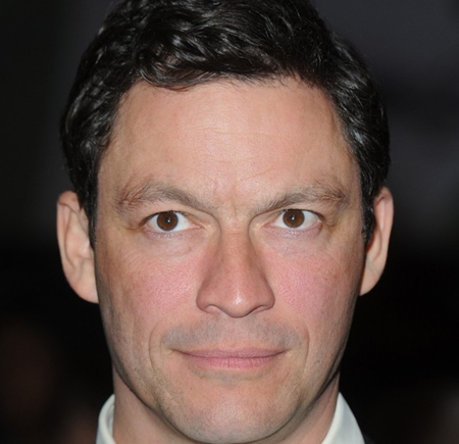 Dominic West
Dominic West
Still, despite its obvious deception, Money Monster is
instructive in a way. For those who understand which group is really
culpable, a soliloquy by Budwell explains some of that group’s offenses:
I want everyone to know something. I might be the
one with the gun here, but I’m not the real criminal. It’s people like
these guys! [pointing to Grant and the set crew]. They’re stealing
everything from us and they’re getting away with it, too. Nobody’s
asking how. Nobody’s asking why.
You got to open your eyes out there. … the government’s no
help. How they just look the other way, since after they’re done
stealing our money, they barely even have to pay any taxes on it! I’m
telling you, it’s rigged. The whole goddamn thing. They’re stealing the
country out from under us. Not the Muslims. Not the Chinese. Them.
It’s all fixed. They like how the math adds up, so they got
to keep rewriting the equation. Which means, the one time you finally
get a little extra money, you try and be smart about it, you turn on the
TV. Boom. That’s how they fucking take it. They take it so fast they
don’t even have to explain it! They literally own the airwaves. They
literally control the information.
That is very good: “Not the Muslims. Not the Chinese. Them.” Ah, yes.
Budwell is blaming people like Grant, CEO Camby and those like them.
But if you replace “they” and “them” with “Jews,” his speech is
instructive indeed. Is it rigged? Well, anyone reading accounts of the
trading patterns of Goldman Sachs, for one, will agree with that. Just
Google it — you’ll get about 800,000 hits.
Also informative about Goldman Sachs is Budwell’s claim, “They take
it so fast they don’t even have to explain it!” Many of us still
remember the charges laid against Goldman in this respect. In brief:
While the SEC is busy investigating Goldman
Sachs, it might want to look into another Goldman-dominated fraud:
computerized front running using high-frequency trading programs. . . .
[Called] High Frequency Trading (HFT) or “black box trading,”
automated program trading uses high-speed computers governed by complex
algorithms (instructions to the computer) to analyze data and transact
orders in massive quantities at very high speeds. Like the poker player
peeking in a mirror to see his opponent’s cards, HFT allows the program
trader to peek at major incoming orders and jump in front of them to
skim profits off the top. And these large institutional orders are our
money — our pension funds, mutual funds, and 401Ks.
Sort of like how the Kosher tax
skims money off the food industry. I think what made the most pointed
sense to me was Budwell’s linking of financial deceit with the power to
create the (un)reality we see and hear: “They literally own the
airwaves. They literally control the information.” This has been a key
point others and I at TOO have made for years: Jews have immense media control throughout the West — and it’s killing us.
White societies throughout the world have been and continue to be
subverted culturally, diluted through scandalous levels of non-White
immigration, and drained of wealth and treasure, which Greg Johnson of Counter-Currents summed up so accurately:
Jews, of course, more than any other people, are
aware of the necessary conditions of collective survival. They are
concerned to secure these conditions for their own people even as they
deny them to us. The obvious conclusion is that they mean for us not to
survive as a people. America is being corrupted, exploited, degraded,
and murdered by the organized Jewish community.
Johnson later added another idea
relevant to my article here: “White Nationalism is an intellectual
movement. We are a vast online educational project.” Indeed, TOO lives only on the Internet.
(I confess I was miffed when I read recently the following lines from Andrew Anglin in an otherwise good entry:
“The grounds are fertile and the time has come for an open discussion
about Jews in society. What we need now is an unironic, non-humorous
take on the Jewish problem from serious people who are able to speak
seriously about this serious problem.” Has TOO not been a leading source of serious discussion of this topic for two decades?)
Strike Through the Mask!
To recap, I’ll repeat the reasons for linking financial scandals with
Hollywood: First, Jews run Hollywood. It is indeed an empire of their
own. Second, Jews throughout modern history have been involved in
immense financial scandals, reaching truly astonishing proportions in
the last half century. Third, Jews use their Hollywood propaganda
machine to obscure these facts. Case in point: This is the sixth major
film I’ve featured that advances the deception about the Jewish role in
financial skullduggery. As I’ve said, this is an explicit disinformation
campaign.
Again plugging the recent TOO article from “Publius,” we see
how the author has gone through volumes of evidence of interlocking
Jewish financial and political activity. He then adds a nice literary
touch when he quotes this, then expounds further:
“So you see, my dear Coningsby,” the Jewish Benjamin Disraeli wrote in his novel Coningsby, “that
the world is governed by very different personages from what is
imagined by those who are not behind the scenes.” It is my goal — and if
I may be so bold as to speak for others, that of the other writers at
the Occidental Observer and other dissident voices I’m sure —
to shoulder our way into the conversation and show plainly the
architects of this modern horror show. With any luck, figures like
Steyer and Bloomberg will continue to drop the mask and show the public
who they really are, making our job that much easier. To combat the pernicious agenda of the globalist establishment, we must first understand it. We must know the what’s, the when’s, the where’s, the who’s, the why’s, and the how’s and proceed accordingly. [emphasis added]
I’m glad Publius saw fit to mention the word mask, for that has been a
driving theme of this essay. Joyce uses it by demanding that we “Strike
through the mask!” and later explains how “these Jewish financiers also
escape scrutiny by hiding behind the mask.”
I’ve tried desperately for years to help others see through this
mask, in large part by examining the products Hollywood has inundated us
with since the advent of moving pictures. My appeal to you is captured
by Publius’s plea: “Do you see how all this works? This is how a
decadent ruling class operates — governing for its own benefit and, for
the preponderance of Jews, that of its tribe” [emphasis again added].
The half-dozen or so Hollywood films I’ve examined here at TOO
play a central role in covering up what is so stunningly obvious. We
need to understand these propaganda techniques and somehow teach others
to see them as well. Otherwise, organized Jewry will continue to siphon
off vast sums of money from the greater economy and employ it against
the whole of the goyische world.
In closing, I’ll say that after “striking through the mask,” we must
follow an observation from leading unmasker of Jewish behavior, E.
Michael Jones, where he concludes a recent video
with these simple but profound words: “Consciousness is the beginning
of change.” MacDonald, Joyce, “Publius” — and, yes, Edmund Connelly —
are doing everything humanly possible to “strike through the mask.”
========================






